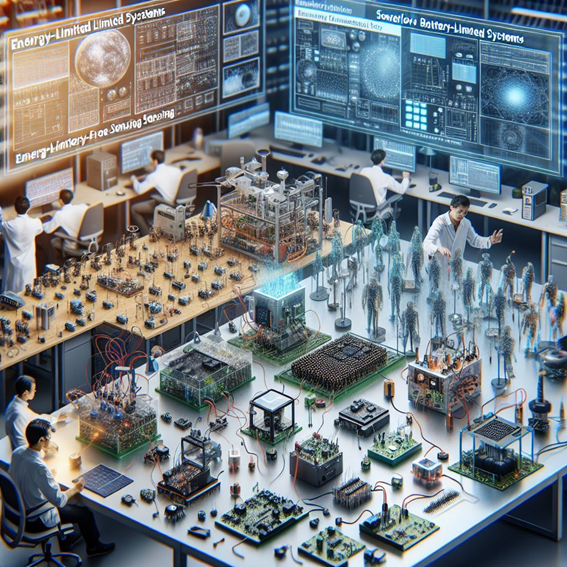In the world of wireless and battery-free sensing, understanding the distinction between energy-limited and power-limited systems is crucial. These concepts are key to designing efficient and sustainable energy harvesting solutions. Let’s explore the differences and implications of each.
Energy-Limited Systems
Definition: Energy-limited systems have a restricted total amount of energy available over time. This limitation is often due to the energy source’s capacity, such as a small battery or energy harvested from the environment.
Characteristics:
- Finite Energy Reservoir: These systems rely on a limited energy reservoir, which can be depleted if not managed properly.
- Energy Harvesting: Often incorporate energy harvesting techniques like solar panels, radio frequency harvesters, thermoelectric generators, or piezoelectric devices.
- Efficiency Focus: Emphasis on maximizing energy efficiency to prolong operational life.
- Applications: Ideal for remote sensing, IoT devices, and applications where replacing or recharging batteries is impractical.
Example: A wireless sensor node powered by a small solar cell, which collects and stores energy during the day to operate at night.
Power-Limited Systems
Definition: Power-limited systems are constrained by the maximum power that can be delivered at any given moment. This limitation is typically due to the power source’s instantaneous output capacity.
Characteristics:
- Instantaneous Power Constraint: The system can only draw a limited amount of power at any given time, regardless of the total energy available.
- Safety and Design: Often designed to prevent overheating, electrical faults, or to comply with safety standards.
- Power Management: Requires careful power management to ensure that the instantaneous power demand does not exceed the supply.
- Applications: Common in systems where safety and regulatory compliance are critical, such as medical devices, consumer electronics, and industrial controls.
Example: A Power-over-Ethernet (PoE) device that operates within the power limits defined by the PoE standard to ensure safe and reliable operation.
Key Differences
- Energy vs. Power: Energy-limited systems focus on the total energy available over time, while power-limited systems are concerned with the maximum power that can be drawn at any instant.
- Design Considerations: Energy-limited systems prioritize energy efficiency and storage, whereas power-limited systems emphasize power management and safety.
- Applications: Energy-limited systems are suited for long-term, low-power applications, while power-limited systems are designed for scenarios requiring strict power control.

Understanding these distinctions helps in designing and deploying effective wireless and battery-free sensing solutions. By leveraging energy harvesting techniques, we can create systems that are not only sustainable but also highly efficient and reliable.
